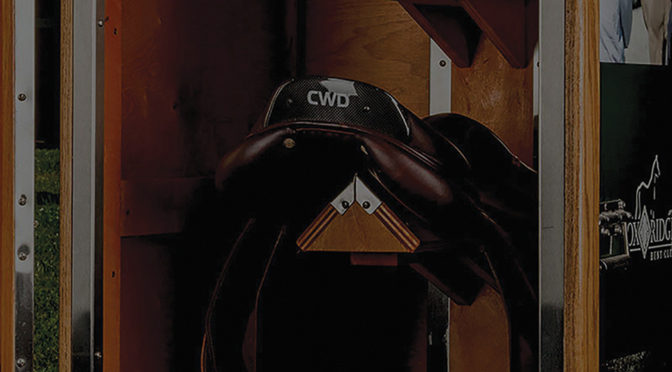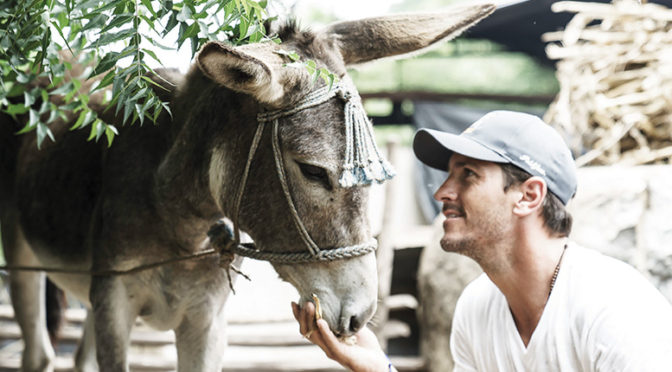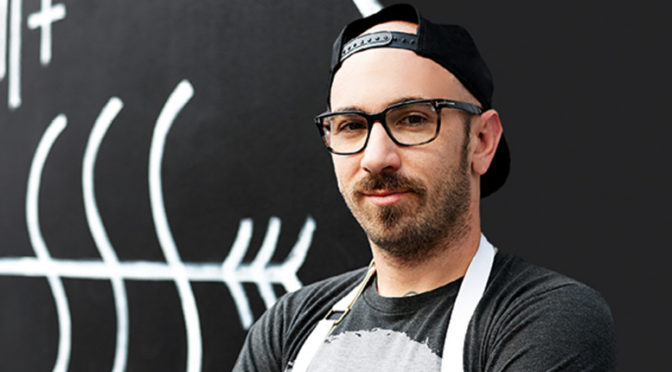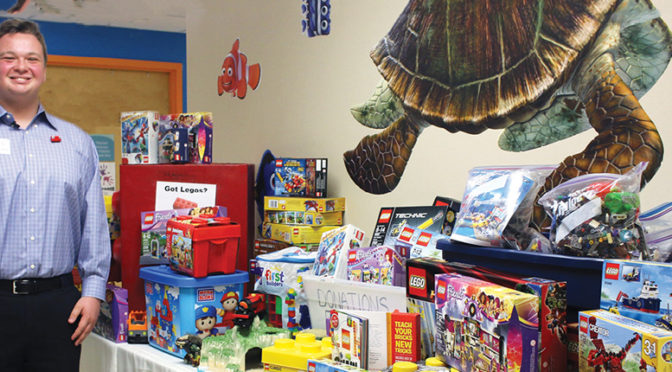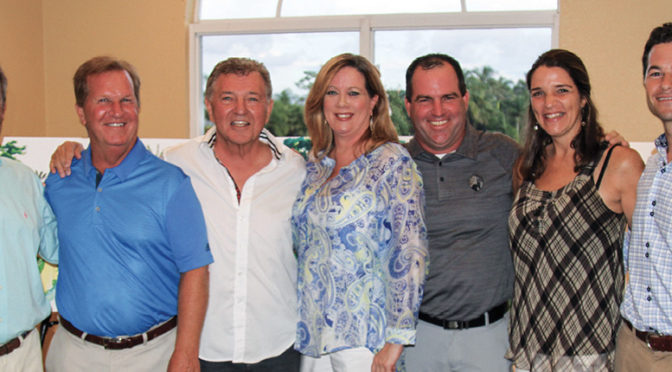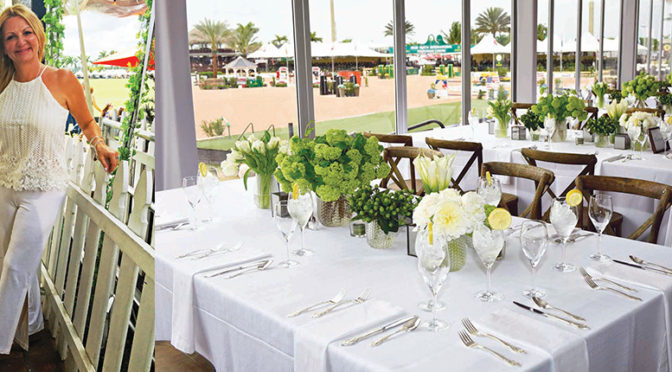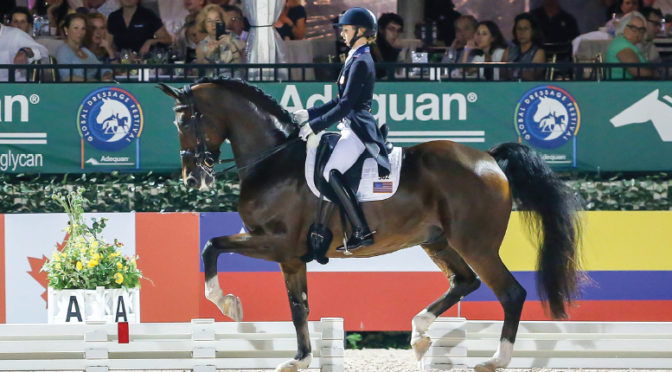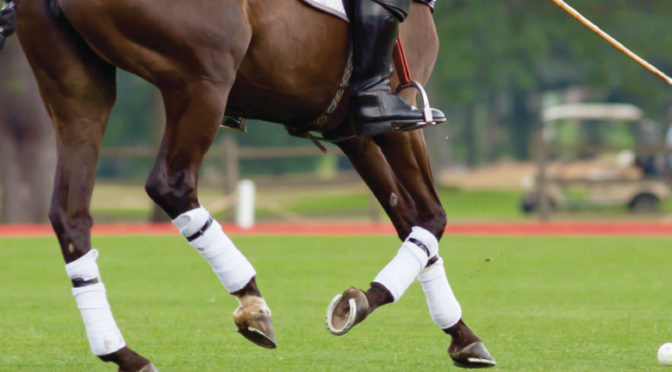Top Jock Tack Boxes Building Irish Roots In Wellington
By Taylor Renner
For any equestrian business, there is no better place to be during the winter season than Wellington. At the start of each new year, Wellington transforms into an international hub for all things equestrian. With so many opportunities to promote and expand his business within such a niche market for four months, Top Jock Tack Boxes founder Joseph Moran has decided to make Wellington his company’s seasonal home.
Originally from Galway, Ireland, Moran started Top Jock Tack Boxes in 2012. After a successful first year building tack boxes for customers across Ireland, the United Kingdom, Switzerland and Germany, Top Jock Tack Boxes expanded stateside and is currently based in New York. The company’s innovative, custom boxes have become a must-have item among top riders, such as international show jumpers Shane Sweetnam, Schuyler Riley, Jonathan and Christine McCrea, and McLain Ward, as well as top dressage rider and trainer Douglas Puterbaugh, to name a few.
Top Jock Tack Boxes brings both quality and functionality with completely customizable, luxury tack boxes built specifically for equestrian athletes. Any size, color and layout can be designed with custom interior configurations and high-definition exterior graphics, along with solid oak engraved panels to feature personalized branding options, such as an athlete’s sponsors, country, web site, stable or other details.
Durable, weatherproof and beautifully crafted, a Top Jock Tack Box makes a great first impression, is practical and, most importantly, protects the owner’s valuable equipment.
“I know a lot of Irish people who are based in Wellington, and they all tell me it’s the place to be during the winter,” Moran said. “That’s where most of the major farms go, and with the products that we sell, from an equestrian business point-of-view, it was imperative for me to be there as well.”
Moran has known about Wellington and the Winter Equestrian Festival for years.
“I saw a lot of posts from WEF through social media,” he said. “I always knew WEF was the biggest show around, and it was definitely a show that I wanted to attend. Last year was our first year at WEF. It was definitely very beneficial for Top Jock Tack Boxes. We got sales from the show and made valuable connections within the top levels of the sport. We loved the whole experience. More than anything, it was just about being there and experiencing it all.”
For Moran, being able to connect and see firsthand an inside perspective into the lives of top riders from around the globe while in Wellington helps him cater his products to fit his customers’ needs.
“Last year, I had the opportunity to tour a couple of top equestrian facilities in Wellington,” he said. “Being able to see the different farms and layouts and the quality of the facilities — it really helps me to develop my products. When I get to see their barns and talk with the riders, I learn a lot about what they’d like to see or have at their barns. There are always a lot of ideas being thrown around, and it’s so beneficial for me because I might see things I haven’t seen before and get new ideas for products.”
Growth within the local Irish equestrian community also sparked Moran’s interest in coming to Wellington. Over the past few years, top Irish riders have established home bases in Wellington, such as show jumpers Shane Sweetnam, Darragh Kenny and Richie Moloney.
“It’s nice to be able to meet up with some of the Irish people in Wellington during season,” Moran said. “There’s a huge Irish community, and they’re all willing to help in any way they can by referring us to other people and telling them to have a look at our products and explaining who we are.”
This year, Moran has even bigger plans to take advantage of his time in Wellington with Top Jock Tack Boxes, providing top-of-the-line bespoke tack boxes to equestrian enthusiasts and athletes alike.
“We’re a lot more organized and prepared this year, with it being our second year,” Moran said. “2017 will be our first full, proper year at WEF and in Wellington during the winter. From that point of view, I very much look forward to it, and I expect it to be a successful season. More people know who we are and what we do now, so I think it’s going to be an even better experience for us this year.”
To learn more about Top Jock Tack Boxes, visit www.topjocktackboxes.com or contact Moran at enquiries@topjocktackboxes.com or (845) 269-9888.
